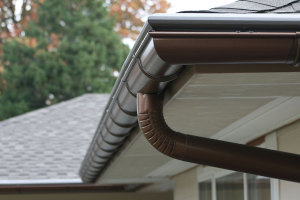Five Most Common Gutter Installation Mistakes
While gutter installation can be done by homeowners themselves, they must avoid committing mistakes that could endanger the occupants’ safety or damage the house because of improper gutter installation.
These are the five most common mistakes related to gutter installation and ways to avoid them:
1. Wrong Pitch Calculation
Gutters are installed with a slight pitch to allow water to flow down towards the downspouts. The pitch is normally one to two inches of decline for every forty feet of gutter length. This also allows dirt and debris to flow down and keep the gutter clean and clog-free. Amateur roofers and beginners usually forget to give the gutter this slight pitch.
2. Wrong Gutter Type
Buying gutters can sometimes be confusing because they come in different sizes, gauges, materials and shapes. Problems occur when you select the wrong gutter type for your home. Buy the most durable material within your budget. Consult with your roof contractor or supplier on the right size and width of gutter suited for your home. Most houses today use a 26 gauge 5 to 6-inch wide K-style aluminum gutter.
3. Wrong Gutter Location
People assume that since rainwater runs off the edge of the roof then they should place the gutters also on the roof’s edge. This is actually wrong practice because water tends to pull back up on the underside of the roof through capillary action and drips down under the roof. It will slide down the fascia and soffit, damaging boards along the way. Position the gutter a few inches under the roof to prevent this from happening. Another solution is installing drip edge under the first course of shingles.
4. Improper Welding of Seams
Sectional gutters have to be welded together and sealed to prevent water leakage. The seams are the weakest points of gutters and usually the areas where problems occur. Exposure to harsh weather and extreme temperatures could crack the seams and damage the gutter. Be careful when welding together and sealing seams because they present the biggest potential problem. If seamless rain gutters are available in your area, use them instead.
5. Inadequate Hanger Spacing
Gutters are fixed to the roof with the use of hangers that must be carefully spaced together to provide a proper lift and support to the gutter. The spacing between the hangers are around three feet or less. Gutters could sag from improper spacing of the support system and tug at the whole gutter system. Left alone, the gutter could eventually rip off the side of your home. Check the instructions of the manufacturers and place the hanger accordingly.
